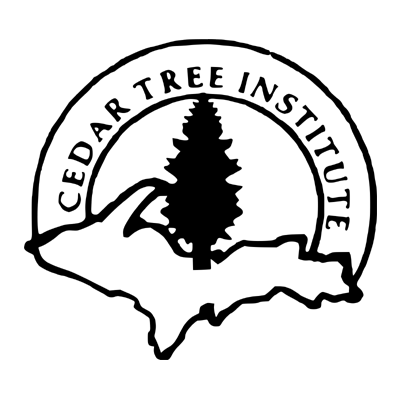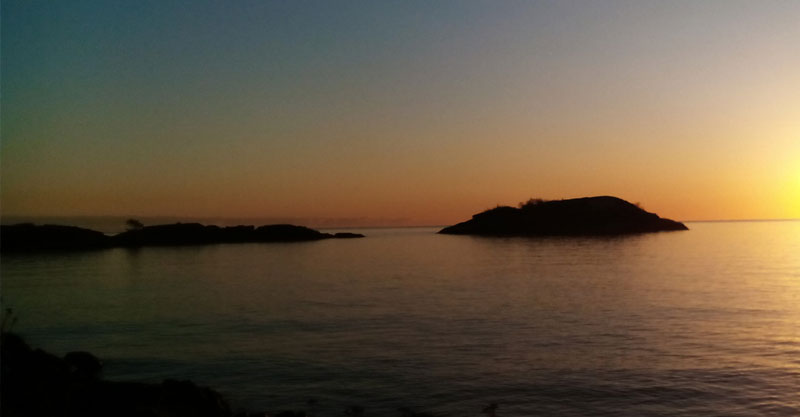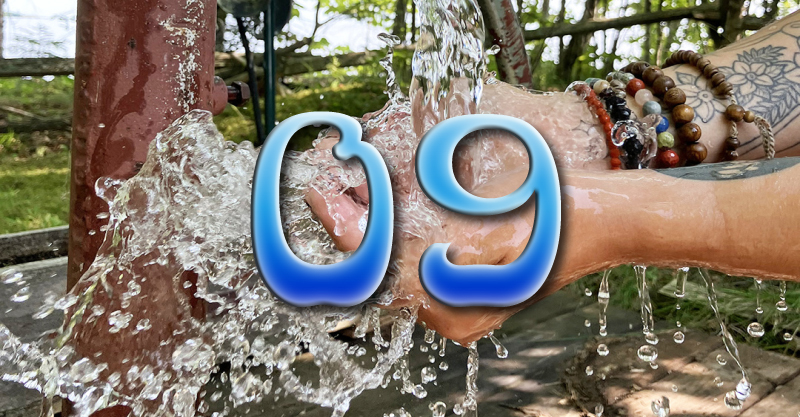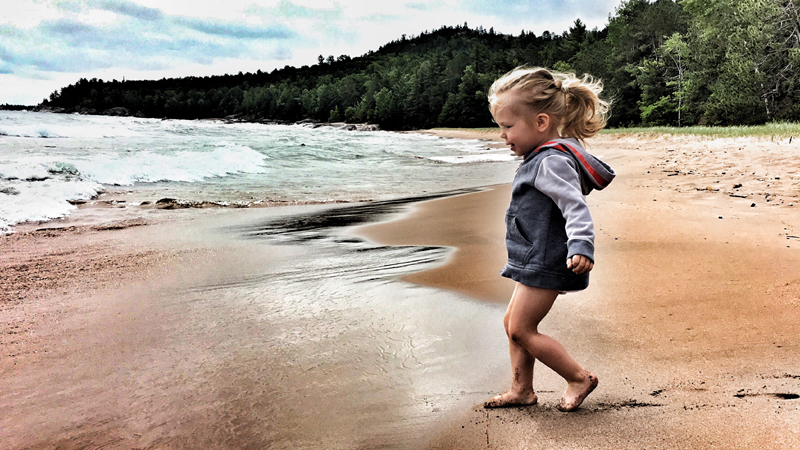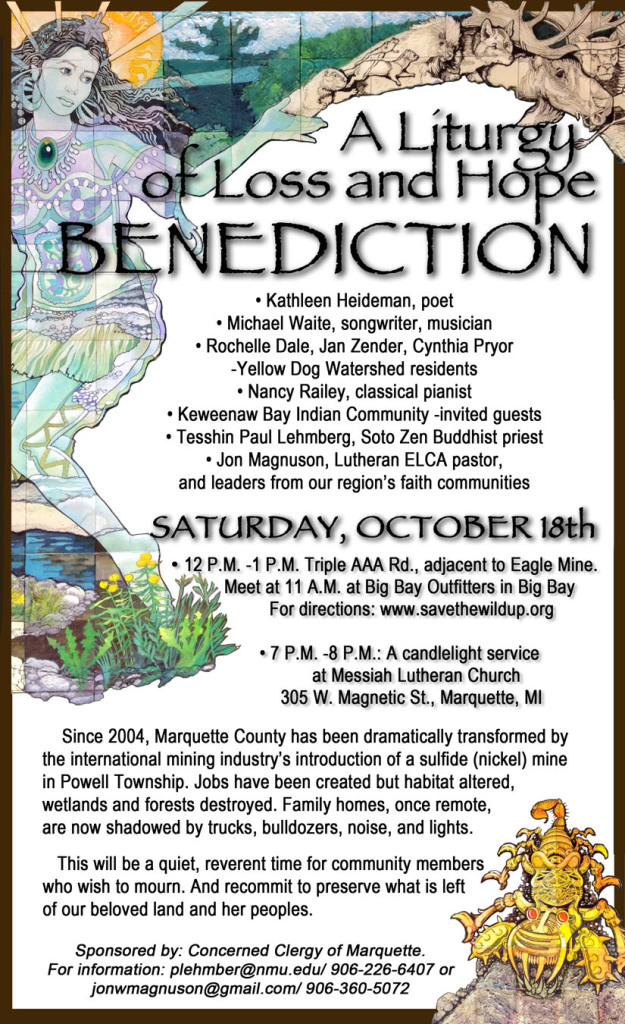The Gift of Water
as seen in the Marquette Monthly September, 2018
By April Lindala
I have lived in Michigan for most of my life and in the Upper Peninsula for all of my adult life. It is an irony to me—especially since I walk near and drive alongside Lake Superior daily—that I open this essay with the confession that I have taken water for granted. Does the magnitude and magnificence of Lake Superior play tricks on my mind and make me believe that water will always be available?
According to the blog The Decolonial Atlas, nayaano-nibiimaang gichigamiin means “the five freshwater seas” in Anishinaabemowin. The Anishinaabe believe that it is the responsibility of women to pray for and to protect the water. The Anishinaabeg express constant gratefulness for the gift of water. They recognize that humans share the water with all living beings on the planet, and they also recognize that their primary food sources come from the water.
Some non-Natives today believe, in effect, that the engines of capitalism should be allowed to supersede the rights of all of us to have access to clean, safe water. Capitalism has deemed water to be merely a resource for consumption. Water, though, is not merely a resource: water is the source of all.
Through stories and songs and ancient teachings, Native peoples of many tribal nations have shared this knowledge that water is the source of all. Native American Studies scholars, such as Dr. Jeff Corntassel, suggested that we need to embark on a great remembering. The ancient Native teachings are sometimes considered as outrageous or fantastic mythology, and Native nations have understood for centuries that Native beliefs are not recognized as valid or valuable in modern society. Teachings from many tribal nations acknowledge that all beings—and all the waterways—are deeply connected to their ancestral homelands. Water is not only a gift for the human nation but for other nations as well, such as those-with-wings and the four-leggeds. I submit that water knows that it is a gift to all living beings.
Gitchi Gami, as the Anishinaabe refer to Lake Superior, is its own life form with its own voice. Gitchi Gami fulfills its responsibilities to the earth by taking care of multiple plants, animals, and other beings. This may be an unfamiliar concept for some to understand because it is a paradigm shift from what is usually taught in mainstream society. Some may also not believe that a forest of trees can be its own community and that individual trees can communicate with each other. On a recent plane trip, I viewed a TED Talk about a scientist working in British Columbia who had determined that one of the functions of tree roots is to serve as a communication network in the forest.
Haudenosaunee artist Elizabeth Doxtator, who spoke at Northern Michigan University’s DeVos Art Museum in the fall of 2016, uses the term “re-villagize,” by which she means the re-establishment of Indigenous communities that interact closely with their ancestral homelands in order to respectfully take care of the environment and each other. Could this idea of re-villagizing assist us in our quest to reconnect with the water, the forests, the land, the air, and all beings of this territory? Could this idea help us to re-think (or remember) how we healthfully interact with and protect our most sacred source: the water?
I believe it can, and I believe that the quick and caring community reaction to the June 2018 flooding in the Copper Country not only demonstrates the best of our humanity but also shines a light on what re-villagizing might look like for the human community. But what about our non-human neighbors with whom we share this earth? What about the community of forests? What about the nation of loons? All of these communities also need access to clean and safe water. How do we live cooperatively and share what the earth has to provide for all beings, all nations?
I am grateful and humbled to be a guest and live within the ancestral homelands of the Anishinaabe. It has always felt to me like a very special place. In my own life, I strive to confront the questions that I am posing here. The environment encourages me, challenges me, and forces me to do so. This might sound like I am thinking only of a future that is desolate; however, I carry a deep hope that re-villagizing can take place for all beings of the earth. I believe we can be inspired by the water to re-think, re-imagine, and re-remember what it is to live not only on the earth but with the earth. I believe the Anishinaabe territory is a place to begin that great remembering.
WATER SAVER TIPS
Fix your outdoor plumbing leaks—they’re just as expensive and wasteful as indoor leaks!
Set your lawnmower to its maximum height. This will minimize evaporation and develop deeper root systems.
Contributor’s note: April Lindala is Director of the Center for Native American Studies at Northern Michigan University.
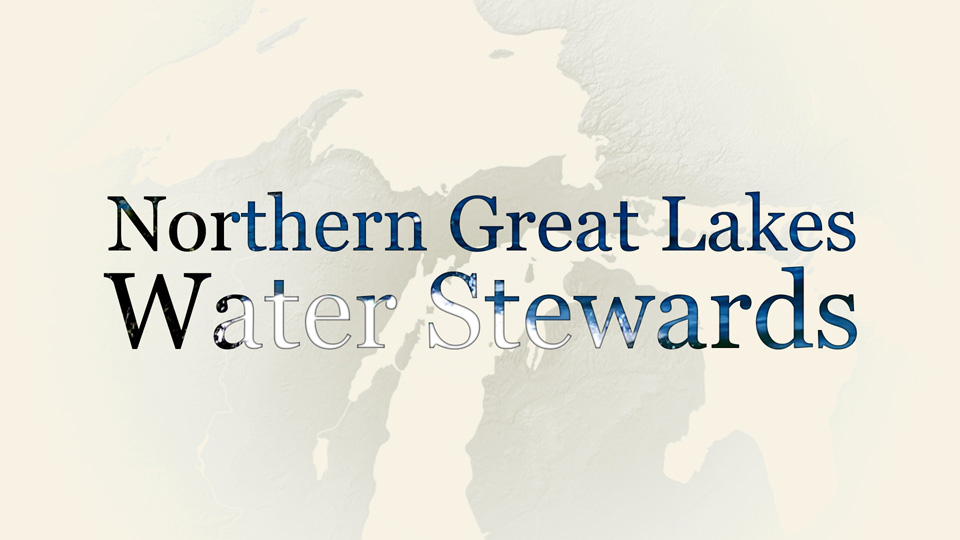
“The Gift of Water” columns are offered by the Northern Great Lakes Water Stewards and the Cedar Tree Institute, joined in an interfaith effort to help preserve, protect, and sanctify the waters of the Upper Peninsula.
